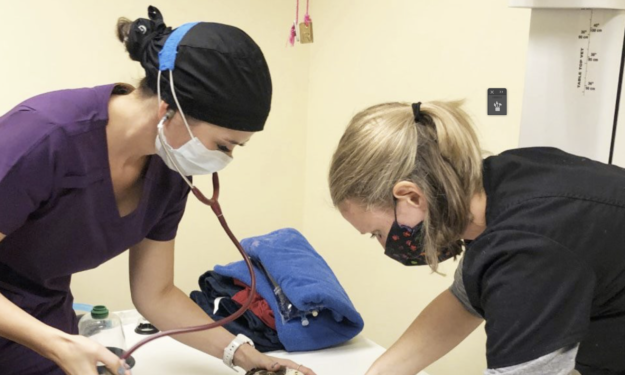New Service: Urgent Care at Peak

In the past year, the veterinary industry has seen an impressive increase in caseload. The cause of this caseload increase is multifactorial, and the pressure it has placed on veterinary professionals is unlike anything our industry has faced in the past.
Wait times have increased across the board. Many emergency veterinary clinics have stopped seeing incoming patients or are turning non-critical patients away. Primary care veterinarians are similarly swamped. New clients, in addition to loyal clientele, experience extended time frames for booking both wellness & sick appointments.
The combination of these scenarios has led to a population of under-served patients: pets that are sick or injured, but stable. These patients face significant wait times at emergency veterinary hospitals (or get turned away), and can’t afford to wait weeks for an appointment with their regular vet. This specific set of patient needs has led to a new type of veterinary service: veterinary urgent care.
New Service: Urgent Care at Peak Veterinary Referral Center
In August of 2021, Peak will be opening an urgent care service to provide targeted triage and treatment for pets in the area.
These are pets who don’t need invasive procedures, hospitalization, or long-term management of a medical issue, but who do need to be seen in a timely fashion. Now that these patients can be seen through urgent care, critical time and space will be freed up in both ER and primary care practices.
Which Patients Can Be Seen Through Urgent Care
The success of urgent care requires understanding and effective communication of the illnesses that can be dealt with in an urgent care setting.
Urgent care candidates include pets experiencing the following clinical signs:
- Vomiting and/or diarrhea
- Inappetence or lethargy
- Blood in urine or stool
- Coughing without respiratory distress
- Lameness, limping, or difficulty walking
- Traumatic lacerations or injuries
- Porcupine quills
- Bite wounds
- Skin, ear, and eye issues (including fleas)
- Asthma or allergic reactions
- End of life assessment/euthanasia
- Tick-borne disease
Limits to Urgent Care
There is a limit to urgent care services. Urgent care is not equipped to provide hospitalization or major surgical services.
If a patient arrives at urgent care with a condition that requires more than the service can provide, one of two things will happen. The pet may be triaged away to seek emergent care elsewhere. Or, if necessary, the pet will be stabilized by the urgent care team and then transferred to a different hospital. Think of us as a Minute Clinic for your pet – we can treat and diagnose common injuries, illnesses, wounds, allergies and recommend a course of treatment.
To Our Referring Partners
We will need assistance in educating pet owners. Communicating to your clients both the new availability, and the limitations, of urgent care will be the key to our combined success.
Our hope is that the development of urgent care facilities will help lighten the load for both primary care and emergency/specialty hospitals. This will help us all provide better and more available veterinary services to our community!